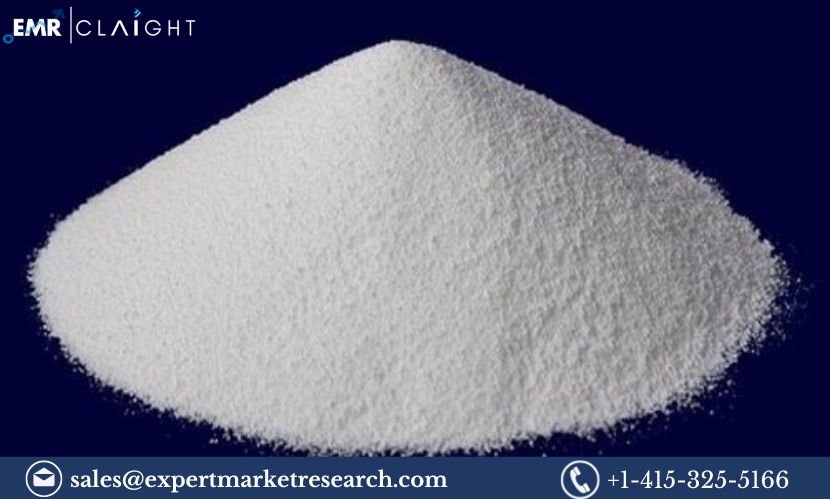The Calcium Lactate Manufacturing Plant Project Report provides a comprehensive guide for setting up a manufacturing facility dedicated to producing calcium lactate, a widely used calcium supplement and food additive. Calcium lactate is the calcium salt of lactic acid and is used in various industries, including pharmaceuticals, food and beverages, and cosmetics. It is primarily known for its use in improving calcium intake for people with calcium deficiencies, as well as its applications in food fortification, as a preservative, and even as a stabilizer in certain cosmetic formulations.
With increasing awareness about the importance of calcium in maintaining healthy bones and teeth, the demand for calcium lactate has been rising. This report outlines the steps involved in setting up a cost-effective and efficient manufacturing facility for calcium lactate, from sourcing raw materials to production processes, equipment requirements, regulatory standards, and market insights.
Market Overview of Calcium Lactate
Calcium lactate has a wide range of applications, especially in industries where calcium fortification or preservation is required. It is commonly used in the food industry as a food additive, where it serves as a calcium supplement, and in the pharmaceutical industry as an ingredient in calcium tablets and antacid preparations. Calcium lactate is also used in cosmetics for its stabilizing and binding properties.
The increasing global demand for dietary supplements, particularly calcium supplements for osteoporosis and bone health, is driving the growth of the calcium lactate market. Additionally, the rise in processed and convenience foods that require calcium fortification is contributing to the expanding market for calcium lactate.
Key Benefits of Calcium Lactate
Calcium lactate offers several advantages, particularly in the food and pharmaceutical industries:
- Bone Health Support: Calcium lactate is an excellent source of calcium, a vital mineral for maintaining bone density and preventing conditions like osteoporosis.
- Food Fortification: Calcium lactate is commonly used to fortify foods such as dairy products, fruit juices, and beverages, offering an easy way to increase daily calcium intake.
- Stabilizer and Preservative: In food processing, calcium lactate acts as a stabilizer and helps extend shelf life by preventing microbial growth.
- Easy Absorption: Compared to other calcium salts, calcium lactate is more easily absorbed by the human body, making it a preferred choice for supplements.
- Safe and Non-Toxic: Calcium lactate is considered safe and non-toxic when consumed in appropriate quantities, making it ideal for various applications in food and healthcare.
Calcium Lactate Manufacturing Process
The process of manufacturing calcium lactate involves several stages, each requiring careful attention to ensure the final product meets industry standards. The key steps in the production process are as follows:
1. Sourcing Raw Materials
The primary raw materials for manufacturing calcium lactate include:
- Lactic Acid: Lactic acid serves as the precursor for the production of calcium lactate. It is typically derived through fermentation of carbohydrates, particularly glucose.
- Calcium Carbonate or Calcium Hydroxide: These compounds provide the calcium ions needed to form calcium lactate.
- Water: Purified water is used throughout the manufacturing process, particularly in dissolving lactic acid and calcium salts.
2. Reaction and Precipitation
The production of calcium lactate typically begins with the neutralization reaction between lactic acid and a calcium salt (calcium carbonate or calcium hydroxide). The process is as follows:
- Neutralization Reaction: Lactic acid (C3H6O3) reacts with calcium carbonate (CaCO3) or calcium hydroxide (Ca(OH)2) to form calcium lactate (Ca(C3H5O3)2) and carbon dioxide or water as a by-product, depending on the calcium compound used.
- Precipitation: Calcium lactate precipitates out of the solution and forms a solid. The precipitate is then filtered and washed to remove impurities, ensuring that only pure calcium lactate is retained.
3. Crystallization
The precipitated calcium lactate undergoes crystallization to enhance its purity and structure. This is achieved by dissolving the calcium lactate in water and then evaporating the solution under controlled conditions to form high-purity crystals.
4. Drying and Milling
Once the calcium lactate has crystallized, it is dried to remove any remaining moisture. The dried product is then milled into a fine powder to improve its solubility and ease of handling. This powder can be used in various applications, such as food additives, supplements, and pharmaceutical formulations.
5. Quality Control and Testing
Calcium lactate undergoes rigorous quality control to ensure that the final product meets the necessary specifications for purity, potency, and consistency. Common tests include:
- Purity Tests: The calcium lactate is tested for the presence of impurities, such as residual lactic acid or other salts.
- Particle Size Analysis: The product is tested for particle size to ensure proper solubility in food and supplements.
- Calcium Content Testing: The concentration of calcium in the product is tested to confirm it meets the required standards for its intended use.
6. Packaging and Storage
Once the calcium lactate meets all quality control standards, it is packaged in moisture-resistant containers, such as plastic bottles or vacuum-sealed pouches, to maintain its quality and prevent degradation. The packaged product is then stored in a cool, dry place until it is ready for distribution.
Key Equipment
Setting up a calcium lactate manufacturing plant requires specialized equipment for each stage of production:
- Reactor Vessels: For the neutralization reaction between lactic acid and calcium salts.
- Filtration Systems: To remove impurities from the solution and ensure high purity of the final product.
- Crystallization Units: For the controlled evaporation of calcium lactate solution to form crystals.
- Dryers: To remove moisture from the crystallized calcium lactate, ensuring it is in a powder form.
- Mills: For grinding the dried calcium lactate crystals into a fine powder.
- Quality Control Instruments: For testing purity, particle size, and calcium content, including HPLC (High-Performance Liquid Chromatography) systems and moisture analyzers.
- Packaging Lines: For sealing the final product in moisture-proof packaging.
Regulatory Compliance and Standards
Manufacturers of calcium lactate must adhere to various regulatory standards and certifications to ensure that the product is safe for use in food, pharmaceuticals, and other industries. Some of the key regulatory bodies include:
- FDA (Food and Drug Administration): In the U.S., manufacturers must comply with FDA regulations for food additives and dietary supplements.
- EFSA (European Food Safety Authority): In the European Union, manufacturers must adhere to EFSA guidelines for food ingredients and supplements.
- ISO (International Organization for Standardization): ISO standards for quality management and safety practices may also apply, particularly for manufacturers exporting to international markets.
Financial Considerations
Setting up a calcium lactate manufacturing plant requires substantial capital investment. Key financial considerations include:
- Facility Setup: Costs associated with constructing a plant that meets cleanliness and safety standards, including specialized areas for manufacturing and quality control.
- Equipment Investment: Purchasing reactors, filtration systems, crystallization units, dryers, mills, and packaging machinery.
- Raw Material Costs: Lactic acid, calcium salts, and packaging materials need to be sourced regularly for production.
- Operational Costs: Including salaries, utilities, maintenance, and regulatory compliance fees.
- Marketing and Distribution: Costs associated with branding, packaging, and distribution of the final product.
While the initial investment is high, the increasing demand for calcium supplements, food fortification, and health-conscious consumers present significant growth potential for calcium lactate manufacturers.
FAQ
Q1: What is calcium lactate used for?
Calcium lactate is primarily used as a calcium supplement, food additive, stabilizer, and preservative in various industries like food, pharmaceuticals, and cosmetics.
Q2: What are the main raw materials needed for manufacturing calcium lactate?
The main raw materials are lactic acid, calcium carbonate or calcium hydroxide, and purified water.
Q3: How is calcium lactate produced?
Calcium lactate is produced through a neutralization reaction between lactic acid and calcium salts, followed by crystallization, drying, and milling.
Q4: What industries use calcium lactate?
Calcium lactate is used in the food and beverage industry, as a dietary supplement, in pharmaceuticals, and in cosmetics.
Q5: Is calcium lactate safe for consumption?
Yes, calcium lactate is safe for consumption and is commonly used in food and dietary supplements, provided it is used in appropriate quantities.
Media Contact
Company Name: Claight Corporation
Contact Person: Lewis Fernandas, Corporate Sales Specialist — U.S.A.
Email: sales@expertmarketresearch.com
Toll Free Number: +1–415–325–5166 | +44–702–402–5790
Address: 30 North Gould Street, Sheridan, WY 82801, USA
Website: www.expertmarketresearch.com
Aus Site: https://www.expertmarketresearch.com.au



